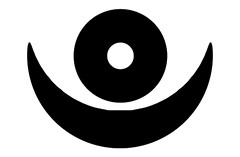The anusvāra or 'after-sound' is ordinarily added to an Indic syllable to indicate the vowel is nasalised. In Roman script it is written ṃ or ṁ (either is correct). The sound is similar to the French nasal vowels so that oṃ ought to rhyme with bon.
This form, the candra-bindu (moon & drop), also called anunāsika 'from the nose', is added to Devanāgarī semivowels - ya ra la va - when they are nasalised: यँ रँ लँ वँ. However in practice only lṃ is found in Sanskrit.
Hindi employs the candra-bindu routinely unless the letter has a vowel marker which extends above the line: हँ हाँ हिं हीं हुँ हूँ हृँ हें हैं हों हौं. Hindi also has the candra on its own हॉ.
However the sign has esoteric connotations, and is routinely added to seed-syllables (bījākṣara). The anusvāra is called kūten (空点)*, the ‘void point’ in Japanese esoteric Buddhism (Chinese 空點). Kū (空) here meaning śūnyatā or emptiness (i.e. the quality of lacking svabhāva or own-being). Ten (点) just means mark, point or dot.
Adding anusvāra to a syllable indicates that the syllable never quite ends, but fades into a nasal hum, and by analogy the concept conveyed by the syllable merges into emptiness.
* Adrian Snodgrass has the spelling kūden in his book on the Diamond and Matrix maṇḍalas. Thanks to Maitiu O'Ceileachair for pointing out an error with the Kanji!


No comments:
Post a Comment